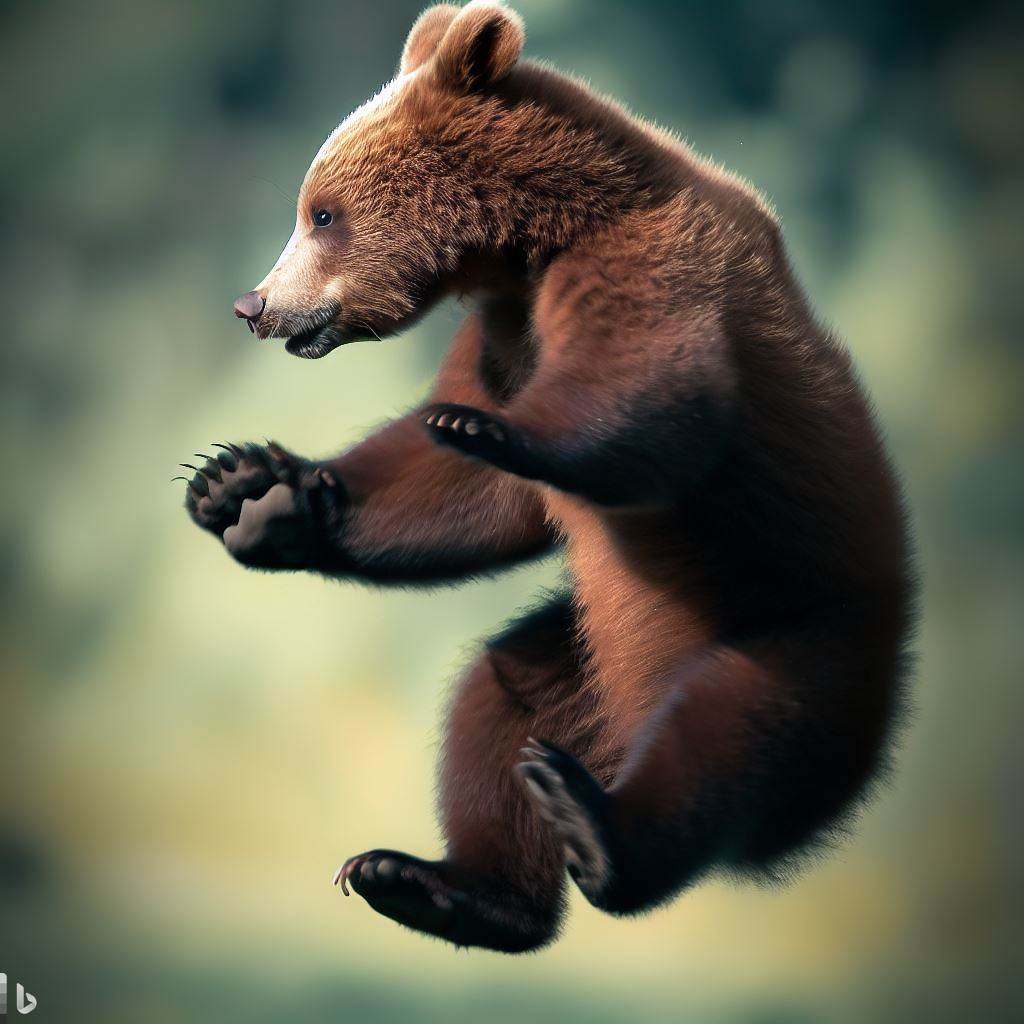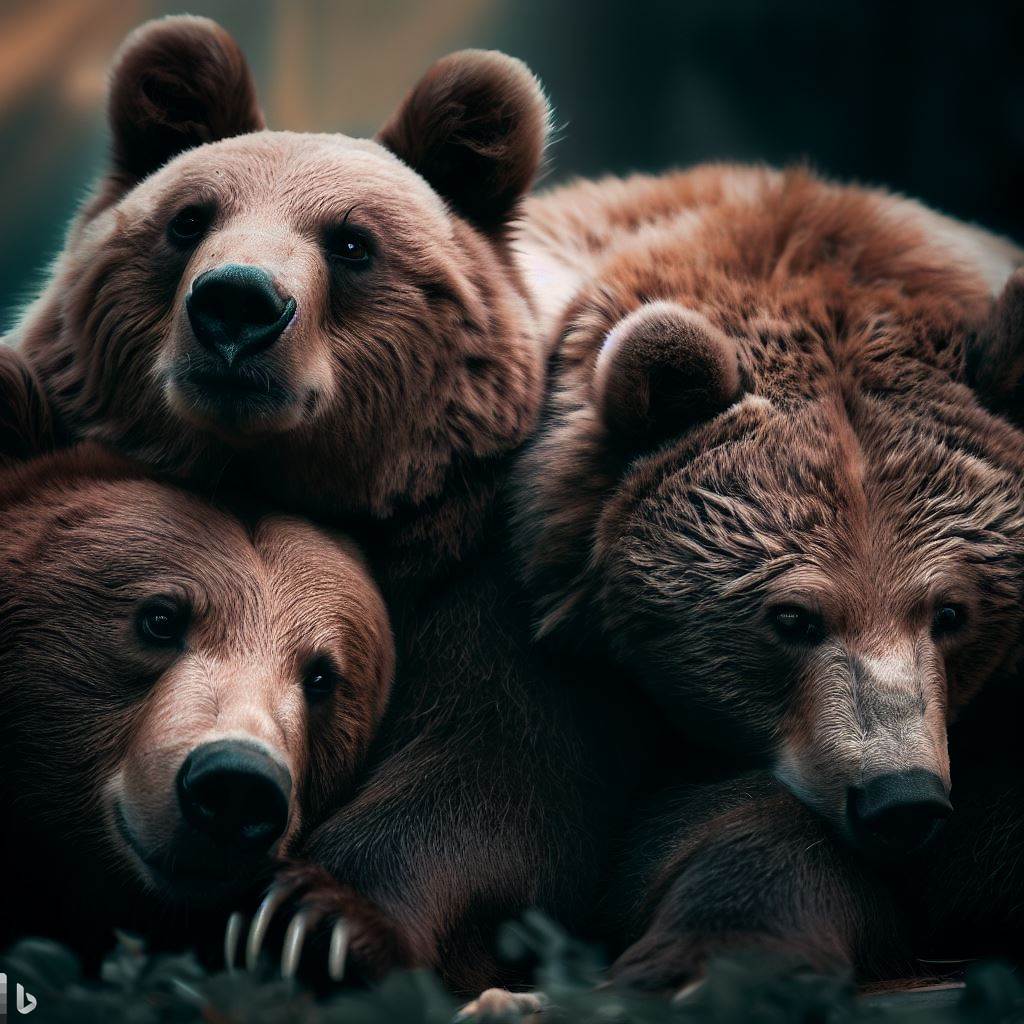Let’s put your knowledge to the test: How high can bears jump? Forget the images of bears dunking or performing acrobatics – the reality might just astonish you! Delve into the world of bear abilities and discover the surprising truth behind their jumping prowess.
It’s not every day that we ponder such lofty questions (pun intended). Yet here we are, delving into the aerodynamics of ursine athletes. We humans might be accustomed to leaping obstacles with Olympic finesse but our furry friends play by different rules.
You see, unlike us humans who can jump several times our own height depending on our fitness levels, bears aren’t exactly known for their vertical lifts. Still intrigued? Strap yourself in as I take you on an unexpected adventure into the world of airborne bears!

Jumping Abilities of Different Bear Species
When it comes to jumping, bears might not be the first animals that come to mind.
However, you’d be surprised by their impressive abilities! Despite their bulky appearance, different bear species have varying jump heights that are truly fascinating.
Physical Characteristics that Influence a Bear’s Jump
A bear’s ability to jump is influenced by several physical characteristics. One important factor is its size and weight. Generally, larger bears tend to have more powerful jumps compared to smaller ones.
Additionally, the length and strength of their hind legs also play a role in determining how high they can leap.
Factors Affecting a Bear’s Ability to Jump
While physical attributes are crucial, there are other factors that can affect a bear’s jumping ability as well.
Environmental conditions such as terrain and vegetation density can either enhance or hinder their leaps. Furthermore, an individual bear’s level of fitness and overall health can impact its jumping prowess.
How Bears Use Their Jumping Ability in the Wild
Bears utilize their jumping abilities for various purposes in the wild. For instance, grizzly bears are known for using their impressive vertical leaps when catching prey or avoiding predators.
Black bears often rely on quick jumps to navigate through trees or obstacles while chasing after food sources.
Observations and Studies on Bears’ Vertical Leap
Researchers have conducted numerous studies and observations regarding bears’ vertical leap capabilities, shedding light on these incredible creatures’ physical prowess. Below are a couple of revealing facts:
Comparisons Between Bear and Other Animals’ Jumping Heights
In comparison with other animals renowned for exceptional leaping skills like kangaroos or mountain lions, bears hold their own ground when it comes to vertical jumping.
While they may not reach the same heights, their agility and power are undoubtedly remarkable.
Impact of Age and Health on a Bear’s Jump Height
Just like humans, bears’ jump height can be affected by age and health conditions. Younger bears tend to have more energy and flexibility, enabling them to achieve greater heights.
Additionally, healthy bears with strong muscles have an advantage in terms of jumping capabilities compared to those facing health issues.
Research Data:
Several studies have provided valuable insights into bear jumping abilities. Researchers measured the jumps of different species at various ages and recorded their findings meticulously. For example:
– Grizzly bears were observed leaping an astounding 8 feet vertically.
– Black bears displayed impressive horizontal jumps covering distances as far as 15 feet.
– Brown bears demonstrated their incredible strength with leaps reaching up to 10 feet high.
These numbers truly highlight just how remarkable bear jumping abilities can be!

Conclusion
Although we might not often associate bears with extraordinary athletic feats like jumping, these creatures possess astonishing physical abilities that cannot go unnoticed.
From powerful grizzlies clearing obstacles in pursuit of prey to agile black bears navigating through dense forests, their leaps showcase both strength and adaptability.
So next time you come across a bear in the wild or see one on television, take a moment to appreciate the fascinating world of bear jumping abilities!
FAQs
Q: How high can bears jump?
A: Bears are great climbers, but when it comes to jumping, they are not exactly Olympic medalists. While bears like the polar bear and grizzly bear can reach quite high vertically, they are less able to jump horizontally. On average, bears can jump up to 12 feet.
Q: Can bears climb trees?
A: Yes, bears can climb trees! In fact, climbing trees is a common behavior for bears, especially for black bears and brown bears. They have strong claws and are skilled climbers, allowing them to climb trees to reach food or to escape from predators.
Q: Do polar bears jump?
A: While polar bears are excellent swimmers and fantastic hunters, they are not known for their jumping skills. Unlike their black bear and grizzly bear cousins, polar bears are not adept jumpers. Their strength lies in their ability to swim and navigate icy terrains.
Q: Can bear cubs jump?
A: Bear cubs, like their adult counterparts, have incredible climbing abilities. However, as adorable as they may be, bear cubs are not known for their jumping skills. They are more likely to be seen climbing trees or playing with their siblings rather than attempting impressive jumps.
Q: How high can a grizzly bear jump?
A: Grizzly bears, known for their strength and size, are capable climbers. While they may not be the most agile jumpers, grizzly bear cubs can still jump up to impressive heights of around 12 feet.
Q: Can bears climb fences?
A: Bears are resourceful creatures and can climb many types of fences. However, when faced with a tall and sturdy fence, bears may find it challenging to overcome. In general, it is best to secure your property with bear-proof fencing to prevent any unwanted visits from these curious creatures.
Q: Can bears jump vertically?
A: Bears, particularly black bears and brown bears, are capable of jumping vertically to some extent. Their powerful hind legs allow them to propel themselves straight up in the air to reach high branches or escape danger.
Q: Do bears jump horizontally?
A: While bears can jump vertically, they are not known for their horizontal jumping abilities. Bears are more adept at climbing and using their strong limbs to navigate their surroundings rather than performing impressive horizontal jumps.
Q: Can bears dive into the water?
A: Bears are not natural divers like marine mammals, but they can indeed dive into the water. They do so by jumping or sliding into the water from a standing position. This diving technique allows them to catch fish or escape from threats.
Q: Can bears jump straight up in the air?
A: Bears are powerful creatures that can indeed jump straight up in the air. Their strong hind legs enable them to leap vertically to impressive heights, making them proficient climbers and formidable predators.
